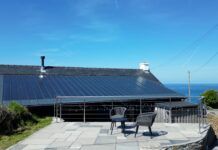Actis has stated that a key driver in the journey to net zero must always be to focus on ‘fabric first’.
This comes after the recent axing of an offshore wind farm project, which Actis said is a major blow to the government’s clean power target.
The Hornsea 4 project would have become an offshore wind farm off the coast of East Yorkshire with a potential capacity of 2.4GW. According to a statement, this would be enough to power more than a million homes.
The statement added that the farm played a major role in the government’s drive to ensure 95% of the UK’s power comes from wind, solar, nuclear and biomass by 2030. Some fear this target is now unachievable, it noted. Although Chris Stark, former chief executive of the Climate Change Committee who heads up the government’s Clean Power 2030 initiative, has said that he does not share this view.
According to the government’s Energy Trends report, renewables have generated over 50% of Britain’s electricity for the last four consecutive quarters.
Actis said that while renewables play an important role in cutting emissions, the first step must always be to improve a building’s fabric efficiency.
Harsha Mistry, Actis UK and Ireland technical manager, explained: “We must all reduce the need to use energy in the first place, rather than expecting to use the same amount of fuel but in a less damaging environmental way. It is the single most important element in reducing domestic emissions.
“Energy efficiency standards should always be based on reducing the need for energy first through more use of efficient building technologies and in particular limiting the heat loss through thermal elements – that is through achieving excellent U-values, reducing thermal bridging and improving air tightness – the fabric first principle.
“Obviously renewables have a very important role to play, but only once the thermal efficiency of the physical structure is maximised.”




